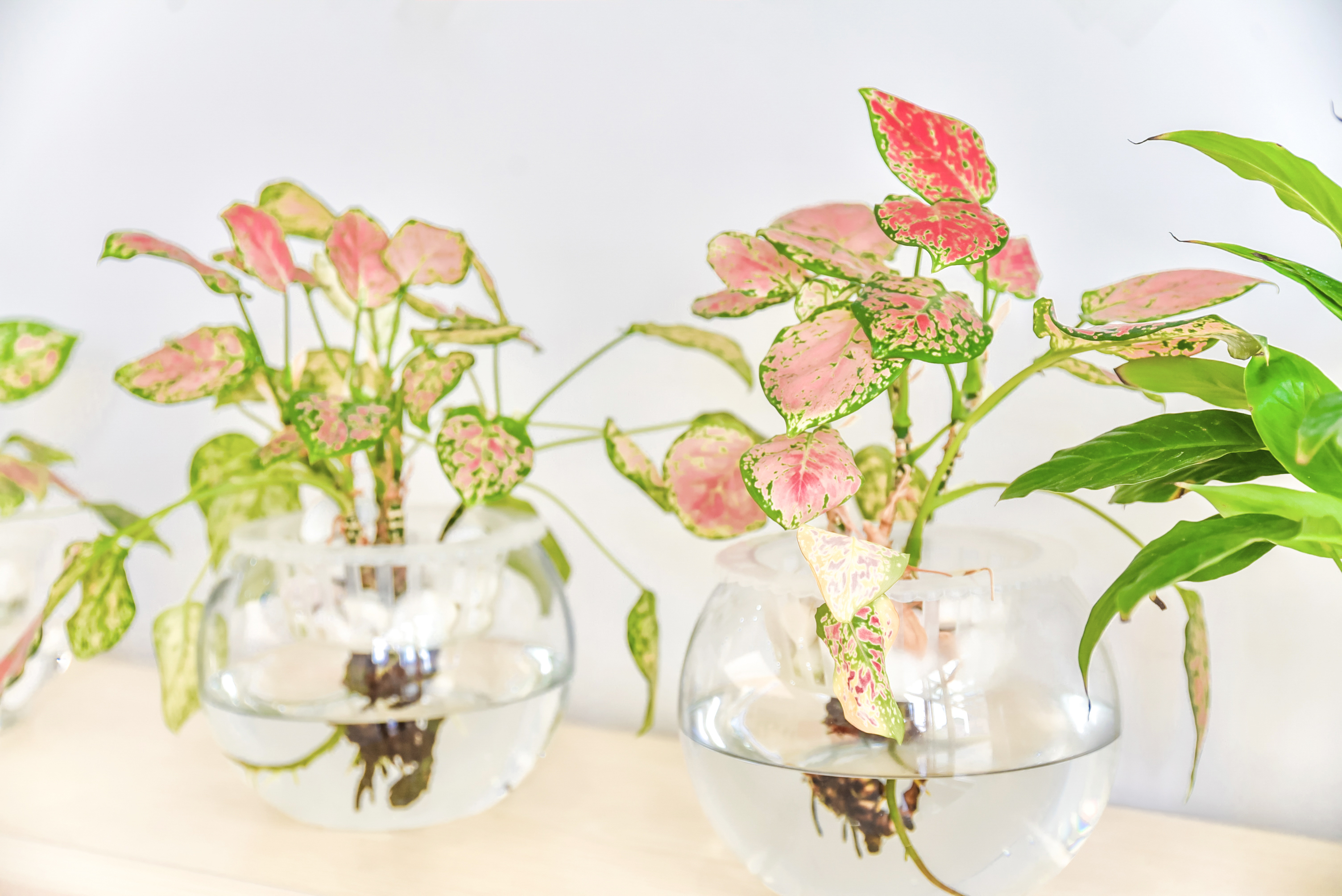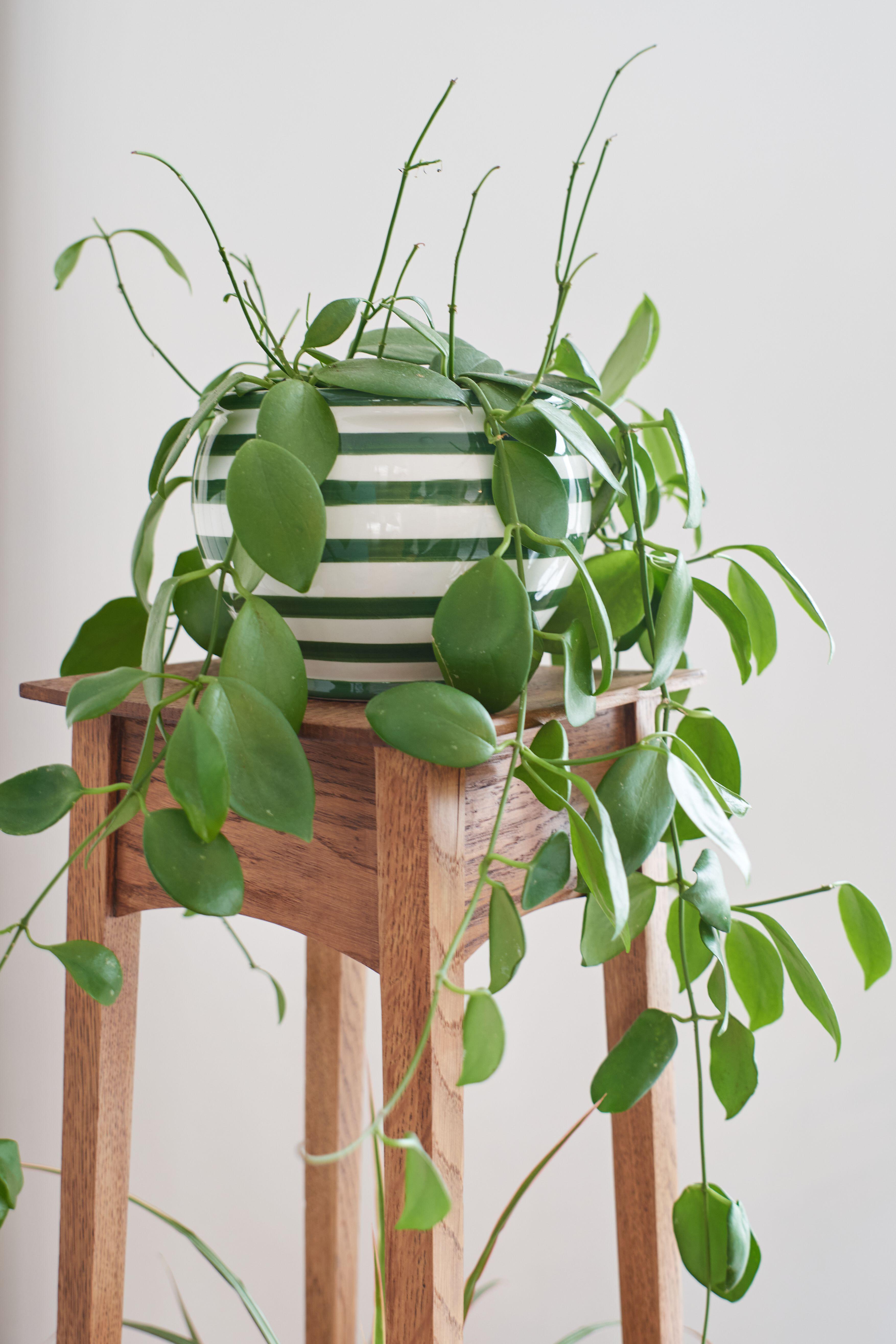
There's no doubt that houseplants are one of the easiest (and cheapest) ways to add visual interest to your space. Green foliage brings a splash of color to an otherwise drab room, and the silhouette of a statement plant in the corner of a room is a great way to break up plain walls but, if you're looking for something extra special, we have the plant (orplants) for you.
Monsteras and fiddle-leaf figs, dramatic though they are, just don't have the same appeal they once did. From living walls to trailing vines, houseplant enthusiasts are always looking for interesting plants that make a bigger impact. So, if you want all the benefits that come with decorating with plants and something with a bit more pizzazz, look to hydroponic houseplants.
As the name hints, hydroponics is the technique of growing plants using a water-based nutrient solution rather than soil, and it's a method that's having a bit of a moment right now. Picture a tangle of roots in a vase of water that opens out to display vibrant blooms or bushy foliage. The best part? You get to be a plant parent without the added worry of watering routines! Here's what the experts have to say, alongside three of the best hydroponic houseplants to introduce to your home today.
What are hydroponic houseplants?
If you thought you needed soil to grow houseplants, think again. Plants that don't need soil, such as air plants, are becoming increasingly popular, and now it's time for the aquatic variety to have a turn in the limelight.
'Hydroponic houseplants are plants grown in water instead of soil,' explains Keri Wilson, a horticulturist with a degree from Oklahoma State University and a plant expert at Garden Media Group. 'While many commonly use this hydroponic method to propagate new plants or start roots, many choose to leave them to grow in water.'
But which houseplants are hydroponic? Well, as it turns out, most of them. 'Generally speaking, you can grow any plant out there using hydroponics,' says Paris Lalicata, plant expert at The Sill. 'Therefore there isn’t such thing as “hydroponic houseplants” since any houseplant can grow in hydroponics if that is your preferred method of growing.'
You might be drawing some comparisons with the common propagation method of putting cuttings in water to grow roots. While the two growing methods bear similarities, rooting a plant in water technically isn't a hydroponic setup according to Paris since a nutrient solution isn’t being provided. 'While there are some houseplants that can be left in water vases indefinitely, most times they are transferred into soil in order to grow strong and vigorously plants,' she says.
Why are hydroponic houseplants trending?

With potted plants being the norm, this visually appealing alternative is a great way to add a bit of variety to your houseplant collection. 'It not only creates aesthetically pleasing decor for centerpieces, but also is a low maintenance way to enjoy the plants without worrying about watering or potting for the time being,' notes Paris, making them a great houseplant for beginners. 'It also gives plant parents a better visual of what is going on beneath the soil.'
Keri adds that this method of growing plants is also a great space saver. 'Hydroponic systems can be more space-efficient than traditional potted plants because the plants don't need a lot of room for roots to grow, and without drainage holes, people are getting a little more creative with plant placement,' she notes.
Then, of course, there's the aesthetic benefits. While we value all plants in equal measure, there's something fascinating about seeing a plant's root system and how it produces foliage. 'Hydroponic plants tend to be displayed in clear containers so you can see the roots growing,' says Keri. 'This horticultural decor can create a clean and modern look that appeals to a lot of people. They can also be a conversation starter as guests marvel at the plants thriving without soil!'
Below are three species of plant that make a great hydroponic option. All you have to do is dust off their soil and place them in water with a nutrient solution (such as these ones, from Amazon)!
1. Pothos

Also known as Devil's Ivy, the Pothos is one of the best trailing houseplants. It has beautiful heart-shaped leaves that cascade down for a dramatic display of foliage, so why not up the ante with some dramatic roots, too?
'Pothos come in many varieties with solid green to variegated leaves that cascade
beautifully down from their container,' says Keri. 'They are extremely fast growers, so seeing their lush green foliage trailing from a sleek hydroponic container so quickly is a bonus. They need their water reservoir refilled regularly and a balanced hydroponic nutrient solution added according to the package directions.'
To style them, Keri suggests hanging terrariums or glass globes. 'You can train them
to climb a trellis for a more vertical accent,' she adds.
2. Calathea
'Calatheas are famous for their stunning, patterned foliage,' Keri explains. 'The vibrant colors and interesting leaf shapes add a pop of the prehistoric tropics to your home. With a hydroponic setup, you can appreciate the intricate details of the undersides of the leaves, which are often just as beautiful as the tops.'
These stripey plants, also known as peacock plants, prefer medium to bright indirect light and consistent moisture, which is why they're so well-suited to a hydroponic growing method. 'It helps ensure they get the moisture they crave without the risk of root rot from overwatering,' notes Keri. 'Just be sure to use filtered or distilled water, as they are sensitive to chlorine and minerals in tap water.' For a coordinated look, Keri suggests choosing a container that complements the colors and patterns of the foliage.
3. Hoya

This waxy plant is a succulent by nature, meaning it's resistant to long periods of drought, but it still loves to grow in water nonetheless. 'The clear hydroponic container lets you see the delicate root system and watch the plant develop new blooms,' says Keri. 'Hoyas prefer bright, indirect light and can be grown as trailing plants or trained to climb a trellis. They look lovely displayed on a shelf, hanging basket, or windowsill where they can get plenty of indirect light.'






